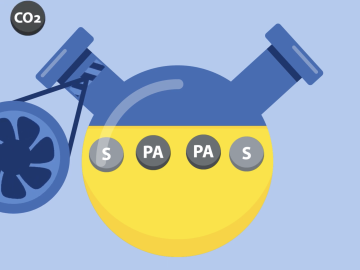
Using neutrons to see the additive manufacturing process at the atomic level, scientists have shown that they can measure strain in a material as it evolves and track how atoms move in response to stress.

Using neutrons to see the additive manufacturing process at the atomic level, scientists have shown that they can measure strain in a material as it evolves and track how atoms move in response to stress.

Using light instead of heat, researchers at ORNL have found a new way to release carbon dioxide, or CO2, from a solvent used in direct air capture, or DAC, to trap this greenhouse gas.

Two ORNL research projects were awarded through the Chemical and Materials Sciences to Advance Clean Energy Technologies and Low-Carbon Manufacturing funding opportunity, sponsored by the Office of Basic Energy Sciences within the DOE Office of Science.

Radu Custelcean, an organic chemist at the Department of Energy’s Oak Ridge National Laboratory, is working with colleagues to develop an energy-efficient and sustainable

